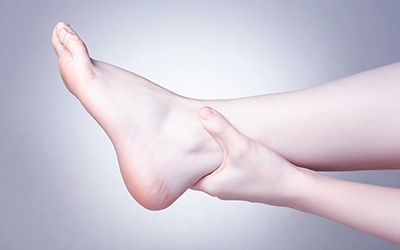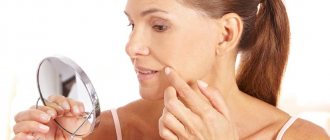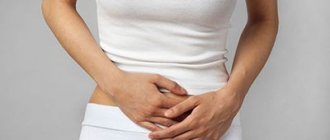With such a phenomenon as edema
, face almost everyone. They appear due to excessive accumulation of fluid in tissue spaces, internal organs and cells. Most often, patients at the CELT multidisciplinary clinic complain of swelling of the legs.
Fluid stagnation causes discomfort and can signal the presence of a serious pathology. Moreover: facial swelling
They are also a cosmetic defect that does not make anyone look good. Despite the fact that the etiology of edema differs, the mechanism of its formation is usually similar. The swollen tissue itself is a pronounced swelling, and when you touch it, marks remain on it.
At CELT you can get advice from a neurologist.
- Initial consultation – 3,500
- Repeated consultation – 2,300
Make an appointment
Is swelling always dangerous?
Many patients want to know: are there cases when swelling is normal? Yes, there are. So, for example, if you notice that occasionally in the evenings your legs swell
, this can be considered the norm.
However, in order to eliminate all risks, it is necessary to visit a therapist and undergo appropriate diagnostic tests. The causes of facial swelling
in the morning can be a considerable amount of liquid drunk in the evening. To prevent this from happening again, you should reduce the amount of its consumption before bedtime. Another preventative measure is to limit your salt intake.
Pregnant women often suffer from edema. As a rule, they are also not dangerous - however, it is best to visit the doctor who is observing you. In this way, you will eliminate the risk of late “toxicosis” and preserve your health and the health of your baby.
Swelling of the body
Generalized swelling is the most serious situation. There is always a systemic reason here. Swelling of the whole body can occur with:
- hypothyroidism (decreased levels of thyroid hormones);
- diabetes mellitus;
- increase in female sex hormones (for example, during pregnancy);
- hypertension and renal dysfunction.
Swelling of the arms and legs may be observed, not related to the consumption of salty foods or the amount of liquid. In this case, you should consult a doctor to undergo an examination and find out the cause of the development of edema.
Swelling of the joints may signal the onset of arthritis or gout. These are serious diseases that require medical intervention. It is unlikely that it will be possible to relieve swelling simply by limiting salty foods, as in other cases.
Types of edema
In accordance with the reason that led to the appearance of swelling of the hands
, legs or face, the following types are distinguished:
- Neurogenic - appear due to malfunctions of the nervous system and its inability to control the functioning of blood vessels;
- Hydrostatic - arise due to obstructed blood outflow from internal organs due to the presence of obstacles and weakness of the heart muscle;
- Inflammatory processes - edema is one of the clinical manifestations of allergy or inflammation;
- Hypoproteinemic - occurs due to a drop in protein levels in the blood, which leads to the entry of fluid into the tissues;
- Membrane-gene - the integrity of the walls of blood vessels is compromised, which leads to their “leaking”.
Depending on the location, there are:

- Local - localized in a specific area. These include allergic, toxic and inflammatory edema;
- General - arise due to significant accumulation of fluid in the body (from 4 to 9 liters). These include cardiac, renal and endocrine edema.
Causes of swelling

There are several mechanisms for the development of edema:
- disruption of venous outflow and increased hydrostatic pressure in the capillaries;
- lack of protein and decreased albumin in the blood plasma (due to malnutrition);
- disturbance of oncotic pressure in tissues (for example, due to excessive breakdown of collagen, swelling of the skin may occur);
- increased osmotic pressure and fluid retention as a result of electrolyte imbalance (excess sodium - table salt);
- violation of the permeability of the vascular wall or prolonged dilation of blood vessels (with inflammation, allergic reactions);
- lymphostasis (impaired lymph flow).
It is important to remember that severe swelling is most likely a sign of a serious illness. For example:
- kidneys (swelling in the morning);
- heart (evening edema);
- veins and lymphatic vessels;
- allergic diseases;
- endocrinopathies.
Some hormones also have the ability to retain water, for example, progesterone and FSH (follicle stimulating hormone). Synthetic estrogens can expand the lumen of blood vessels, disrupt the rheology of the blood (make it viscous) and negatively affect the condition of the veins. This is why problems with swelling are more common in women than in men.
Edema as symptoms of diseases
The answer to questions such as “What should I do if my feet are swollen?” or “ How to relieve facial swelling
?, first of all, lies in the need to discover the cause causing such a phenomenon. As already mentioned, edema is often a clinical manifestation of various diseases that require treatment.
Heart pathologies
Any pathological condition of the heart, in which it does not fully cope with its function of pumping blood, is manifested by edema.
| Diseases |
|
| Clinical manifestations | The above heart pathologies can cause frequent swelling of the legs, since it is difficult for the heart to pump blood to organs located at a distance. Because of this, the blood in the vessels of the legs stagnates during the day, which leads to swelling in the evenings. The features of such edema are as follows:
|
| Diagnostics |
|
| Treatment | Treatment of leg swelling due to heart failure is selected individually, depending on the complexity of the case and the patient’s indications. Diuretics have proven themselves well. |
Lung diseases
Lung pathologies, accompanied by increased pressure in the pulmonary vessels, lead to difficulties with pumping blood in a small circle. As a result, disruptions occur in the entire blood flow, which leads to the formation of edema.
| Diseases |
|
| Clinical manifestations | Swelling of the legs is accompanied by:
|
| Diagnostics | The diagnosis is made by a general practitioner or pulmonologist, who may prescribe the following studies:
|
| Treatment | Treatment is prescribed individually, but swelling can be eliminated by taking diuretics prescribed by the doctor. |
Kidney diseases
Kidney diseases are characterized by a decrease in the amount of protein in the blood, which leads to fluid from the bloodstream rushing into tissues and organs. In addition, there is an accumulation of salt and water, due to which the patient’s body is oversaturated with liquid.
| Diseases |
|
| Clinical manifestations | Kidney diseases are characterized by swelling of the face (in particular the eyes), as well as swelling of the fingers and hands themselves. They appear after night, in the morning and are characterized by pale skin color. Other symptoms: increased blood pressure, pain in the lumbar region, increased body temperature, fatigue. |
| Diagnostics |
|
| Treatment | Treatment is prescribed individually, but to eliminate edema, the attending physician prescribes diuretics. |
Severe liver pathologies
Since the liver is the organ that is responsible for the production of blood proteins, malfunctions in its functioning lead to the fact that fluid from the bloodstream rushes into tissues and organs. Congestion affects the lower part of the body.
| Diseases |
|
| Clinical manifestations |
|
| Diagnostics |
|
| Treatment | Treatment involves taking medications: anti-inflammatory, choleretic, restoring liver cells. If tumors are detected, they are removed, and after surgery, radiation therapy is prescribed. |
Quincke's edema
Quincke's edema is subcutaneous edema that is of an allergic nature.
| Diseases |
|
| Clinical manifestations | Swelling is on the face: cheeks, lips, eyelids. Sometimes they can be localized on the arms, legs or body. This happens upon contact with an allergen. Accompanied by severe itching, runny nose and lacrimation. |
| Diagnostics | Special allergy tests are carried out to identify the allergen. |
| Treatment | Avoiding contact with the allergen, taking anti-allergy medications. |
Arthritis
| Diseases | Various forms of arthritis: rheumatic, gouty, reactive, infectious, rheumatoid. |
| Clinical manifestations | Edema occurs in the upper and lower extremities and is localized in the joint area. They are accompanied by:
|
| Diagnostics |
|
| Treatment | They are selected depending on the type of arthritis: taking antibiotics, hormonal agents, anti-inflammatory drugs. |
Tingling sensations in the legs due to a hernia: how to restore blood circulation
When a spinal hernia occurs, the intervertebral disc is displaced and subsequently extends beyond the vertebra. With this condition, not only back pain occurs in the area
lumbar region, but also numbness of the leg, because blood circulation is impaired. For this reason, motor ability decreases and the patient’s quality of life deteriorates.
The leg becomes weak due to compression of nearby tissues by the ruptured fibrous ring. The pathological process reduces sensitivity completely or partially and leads to pain in the lower extremities. When you feel your calves, you feel pain. And this is already a sign of advanced disease, which is fraught with dangerous complications - in the advanced stage, the patient will not be able to move independently. When blood vessels are compressed and tissue circulation is impaired, pain occurs, sensitivity dulls, a feeling of goosebumps appears, and tingling occurs.
How to eliminate numbness
In a spasmodic state, it is difficult for the patient to move, and he will need first aid to relieve discomfort in the numb area:
- Massage the calf muscles and apply warming gels to the affected area.
- Orthopedic patches are used
. They can be bought at a pharmacy without a prescription. Therapeutic stickers remove tension from muscles prone to cramps and improve blood flow in the tissues in the affected area.
If you cannot cope with the numbness on your own, and the spasms do not go away, it is better to call an ambulance.
How to treat pathology
If you have an illness, contact a neurologist. After examining and interviewing the patient, the doctor will find out that the leg is cold and the lower back is red and swollen. The doctor will prescribe a general blood test, then treat with non-steroidal anti-inflammatory drugs to relieve pain:
- Selective drugs are administered by injection, which have an analgesic effect. Injections are given intravenously or intramuscularly with muscle relaxants that have a relaxing effect. The dosage of medications is determined by the doctor and depends on the course of the disease and the severity of damage to the calf muscles.
- To speed up the healing process, physiotherapeutic procedures (electrophoresis and magnetotherapy) are used, influencing the body with direct electric current while simultaneously administering medications through the skin. Beneficial substances are instantly delivered to the diseased area.
- An X-ray of the spinal column will reveal a hernia and even the slightest shift of the intervertebral disc.
- The patient will benefit from a back and leg massage performed by a specialist. Manual therapy removes tension and spasms of the lumbar muscles, normalizes blood circulation, and releases the pinched nerve.
Painless physical procedures such as laser heating and cryotherapy are aimed at eliminating inflammation, pain, swelling and numbness of the foot.
Preventive actions
To prevent the condition from worsening, a person should engage in physical therapy. Under its influence, the lumbar region relaxes, and the vertebrae of the back are stretched, releasing pinched nerve roots. Gymnastics relieves compression of nerve fibers by a hernia:
- Hanging on the bar for a few seconds every day helps a lot. This exercise will allow you to stretch your back.
- LKF eliminates pinching, warms up the muscle frame, and restores blood flow in a numb leg. Physical activity strengthens the muscles of the back, preventing the vertebrae from moving further and affecting the hernia.
- You can stretch your spine with water aerobics or swimming.
- Numbness in the legs can be relieved by walking on tiptoes.
- In case of pathological conditions, the Kuznetsov applicator helps. Place your feet on a linen mat with needle modules and slowly move from your heels to your toes. Yoga mat acts on the skin, increasing metabolic processes, reducing pain by relaxing muscles.
- Cycling, in addition to improving blood flow, engages all muscle groups, which prevents numbness.
- Feet should always be warm and not freeze.
- Eating foods rich in B vitamins will prevent discomfort.
- Contrasting foot baths also have a beneficial effect on your well-being.
To prevent serious consequences, comprehensive treatment is carried out under the supervision of a specialist who knows the individual characteristics of the patient and takes into account the degree of mobility of his legs. To restore normal functioning of the spine, treatment sessions should be carried out daily, using the exercises that were shown during medical sessions in a medical institution.
Traditional methods of treatment
Alternative medicine methods help relieve the feeling of wobbly legs. But self-medication is dangerous; before using traditional recipes, you must obtain the approval of a therapist.
- Cucumber tincture is effective. To prepare it, chop pickled cucumbers (2-3 pieces) and add them to cubes of finely chopped red pepper. The mixture is poured with water. The infusion is stored in a place where sunlight does not penetrate. Before rubbing, the mass is filtered and then applied to the numb leg.
- In case of a pathological condition, wrapping the limb with pumpkin porridge is useful. The compress is additionally wrapped in cellophane and wrapped in a warm thing. Keep it for half an hour.
Back healing can be done using a safe technique called chiropractic, which is based on the relationship between the spine and the nervous system.
Author: K.M.N., Academician of the Russian Academy of Medical Sciences M.A. Bobyr
Conclusion
The above pathological conditions are only a part of those that can cause edema. It is important to understand that they are a clinical manifestation of a particular disease, and their treatment should be aimed, first of all, at eliminating the cause that caused them.
That is why, if you discover such a clinical manifestation, immediately seek professional medical help. The specialists at the CELT clinic have everything necessary to correctly diagnose and prescribe adequate treatment for the disease. We do not recommend choosing and taking diuretics yourself, as this may lead to irreversible loss of kidney function. Don't risk your health - seek help from professionals!
Make an appointment through the application or by calling +7 +7 We work every day:
- Monday—Friday: 8.00—20.00
- Saturday: 8.00–18.00
- Sunday is a day off
The nearest metro and MCC stations to the clinic:
- Highway of Enthusiasts or Perovo
- Partisan
- Enthusiast Highway
Driving directions
Effective ways to get rid of puffiness at home
Applying ice cubes
Apply to the area of swelling (bags under the eyes) until you feel strong cooling. The procedure should be repeated 3 times. Day by day, the amount of time you leave the ice on your skin will increase. 5 minutes per approach is enough. You will notice the effect within a week.
Foot work
Use a needle mat, a bowl of pebbles, peas or beans. You need to take at least 30 steps with each leg. You don’t have to endure excessive pain and suffering, but the procedure shouldn’t be completely painless either. By leaning on the back of the chair, you can choose the level of impact of the rug.
You should work out three times a day: immediately after getting up, at lunch, after dressing in the evening.
To get rid of puffiness faster, add body shaking and inversion poses.
Massage insoles and slippers
It is enough to wear shoes with special embossed insoles for 30 minutes a day.
Body shaking
You need to place your feet shoulder-width apart, swing your pelvis left and right, and hit your buttocks alternately with your heels. 3 minutes is enough, but on the first approach, even 30 seconds seems like an eternity to beginners. Shaking activates lymph flow, improves blood flow, revitalizes capillary circulation, reduces the risk of thrombosis and reduces the abdomen.
Jump rope
Bouncing in place helps relieve swelling. If you don't have a jump rope, you can just dance.
Feet above head
Lie on the floor, place your feet against the wall, and in this position, clench and unclench your fingers. A feeling of lightness is felt within a minute.
Try to combine body shaking and an inverted position, you will get rid of swelling faster.
Rolling pin or ball
Rolling the rolling pin with your feet 30 times, transfer your entire body weight to it. The ball will give more precise work: circular movements on the surface of the ball. You can take a tennis one or any hard one from a children's store.
Gymnastics for toes
No one around you will notice this action, so you can do it at work. Place your feet on the floor, point your toes up, and then press down on your soles. Do this up and down several times, first the exercise is done with effort, and then at ease.
By the way, exercise helps get rid of swelling when flying on an airplane.
Working out the inner surface of the legs
With our thumbs we press on the inside of the shins from the tibia, on the thigh - along the middle part of the inner surface from the knee to the inguinal fold, the direction is from the foot to the torso.
Side effects of diuretics
- Water balance disorders - dehydration (dehydration).
- Electrolyte imbalance – deficiency of potassium, magnesium, sodium, calcium, zinc in the body.
- Disorders of phosphate metabolism (contractility of the myocardium and skeletal muscles is impaired, paresthesia, tremor, bone pain, pathological fractures are possible).
- Disorders of uric acid metabolism (hyperuricemia).
- Lipid (fat) metabolism disorders.
- Disorders of carbohydrate metabolism - even short-term use of diuretics can cause impaired carbohydrate tolerance and hyperglycemia.
- Acid-base disorders.
- Endocrine disorders.
- Impaired renal excretory function, azotemia.
- Ototoxic effect.
- Gastrointestinal disorders – nausea and vomiting, constipation and diarrhea.
- Allergic reactions Not everyone finds the list of side effects listed scary enough to refuse to take furosemide in order to lose weight.
Diuretics themselves do not cause addiction, but those who are addicted to diets may develop a psychological dependence - for them these 2-3 kg that are lost with water become very important, and the withdrawal of the drug, leading to swelling the next day, for such people becomes a disaster. The best advice in this case is to never use furosemide as a diet pill. The cosmetic effect will only occur while taking these tablets, and long-term use is impossible due to side effects, many of which are irreversible.
Use any method for removing excess fluid for cosmetic purposes once, when the task is to “squeeze into a New Year’s dress” or get rid of 2-3 kilograms eaten during the holidays (which is mostly water). For these purposes, eat less salty and carbohydrate foods for 1-2 days, give preference to foods that have a diuretic effect. You cannot take pills without a doctor’s recommendation, otherwise side effects (which we wrote about above) cannot be avoided.
Remember: less salt and carbohydrates are the best quick diuretics that help fight edema.
If you liked the article, share with your friends!
.









